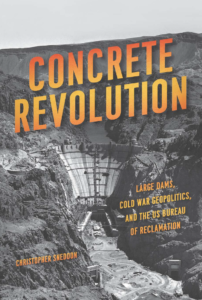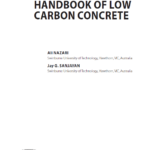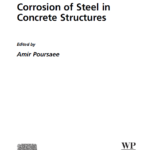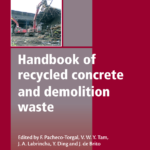محصولات ویژه
© کپی رایت 2025 | کلیه حقوق مادی و معنوی متعلق به بتنو می باشد

 HANDBOOK OF LOW CARBON CONCRETE_ راهنمای بتن کم کربن
HANDBOOK OF LOW CARBON CONCRETE_ راهنمای بتن کم کربن
 Improving Concrete Quality_بهبود کیفیت بتن
Improving Concrete Quality_بهبود کیفیت بتن
 Durability Design of Concrete Structures in Severe Environments_ طراحی دوام سازه های بتنی در محیط های سخت
Durability Design of Concrete Structures in Severe Environments_ طراحی دوام سازه های بتنی در محیط های سخت
 Corrosion of Steel in Concrete Structures_خوردگی فولاد در سازه های بتنی
Corrosion of Steel in Concrete Structures_خوردگی فولاد در سازه های بتنی
 Best Practices Guide for High-Volume_راهنمای بهترین روش ها برای حجم بالا
Best Practices Guide for High-Volume_راهنمای بهترین روش ها برای حجم بالا
 Concrete Structures for Wind Turbines_ سازه های بتنی برای توربین های بادی
Concrete Structures for Wind Turbines_ سازه های بتنی برای توربین های بادی
 Handbook of recycled concrete and demolition waste_ کتاب راهنمای بتن بازیافتی و ضایعات تخریب
Handbook of recycled concrete and demolition waste_ کتاب راهنمای بتن بازیافتی و ضایعات تخریب
 Seismic Design of Concrete Buildings to Eurocode 8_طراحی لرزه ای ازساختمان های بتنی یورو 8
Seismic Design of Concrete Buildings to Eurocode 8_طراحی لرزه ای ازساختمان های بتنی یورو 8
 Concrete Recycling_ بتن بازیافتی
Concrete Recycling_ بتن بازیافتی
 Dynamic Behavior of Concrete and Seismic Engineering_ رفتار دینامیکی بتن و مهندسی لرزه ای
Dynamic Behavior of Concrete and Seismic Engineering_ رفتار دینامیکی بتن و مهندسی لرزه ای
 Report on Measurements of Workability and Rheology of Fresh Concrete_ کتاب اندازه گیری کارایی و رئولوژی بتن تازه
Report on Measurements of Workability and Rheology of Fresh Concrete_ کتاب اندازه گیری کارایی و رئولوژی بتن تازه
 Experiment and Calculation of Reinforced Concrete at Elevated Temperatures_آزمایش و محاسبه تقویت شده بتن در دماهای مرتفع
Experiment and Calculation of Reinforced Concrete at Elevated Temperatures_آزمایش و محاسبه تقویت شده بتن در دماهای مرتفع